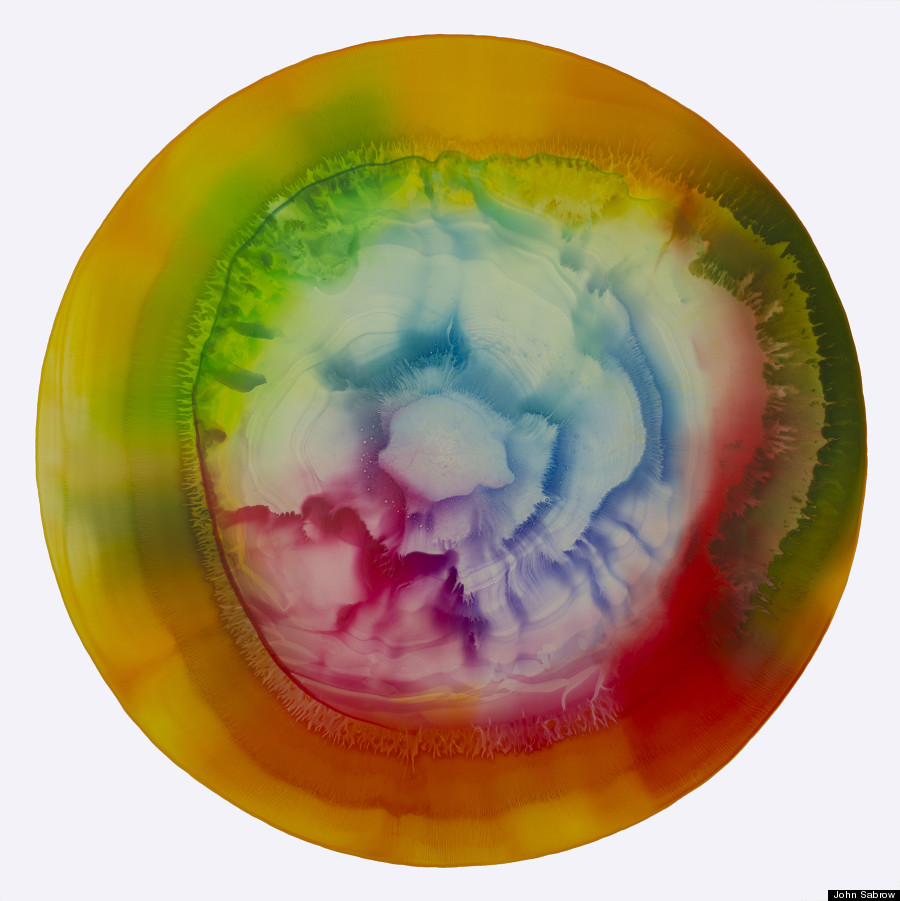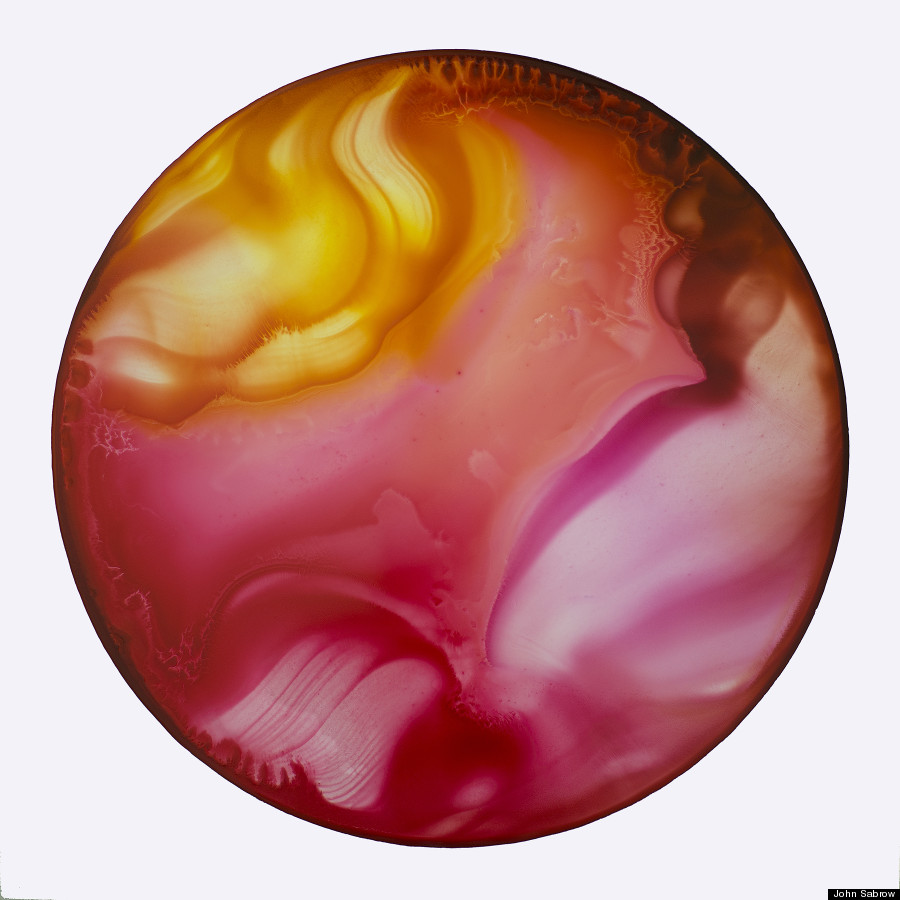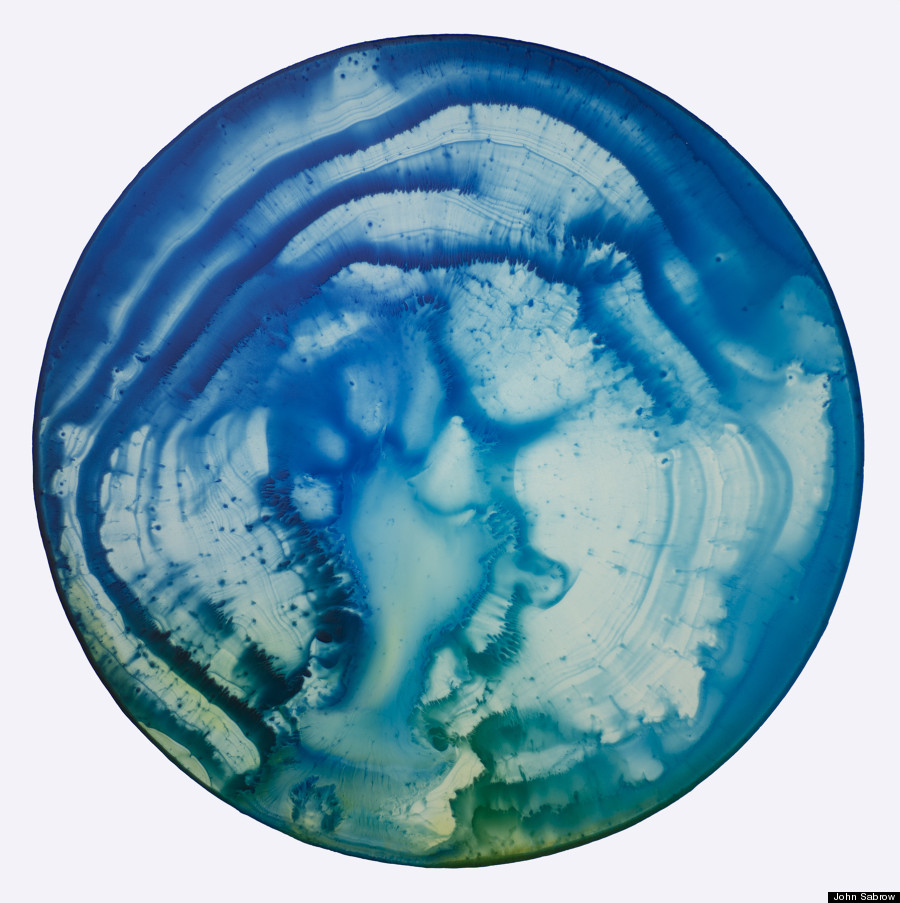John Sabraw is an artist and professor from Ohio who's devised a unique way of raising awareness of his state's pollution problem.
Using toxic runoff found in the Ohio River region, Sabraw produces his own DIY pigments -- bold yellows and reds that are sourced from the oxidized sludge of abandoned coal mines. A masterful feat of art-meets-science on their own, the paint colors eventually became the basis for a primordially beautiful painting series, bringing light to the ecological dilemma of the river region.

Sabraw began his pigment work several years ago when he was working with a sustainability immersion group called "Kanawha." Sabraw and the group were touring southern Ohio -- a region with the largest concentration of coal burning power plants in the world -- when the artist began to take an interest in the very visible effects of pollution in his state.
"I was struck by the local streams that are largely orange, red and brown as if a mud slide was happening further upstream," Sabraw explained in an email to The Huffington Post. "When I found out that these colors were mainly from iron oxide, the same raw materials used to make many paint colors, I wanted to use this toxic flow to make paintings rather than with imported iron oxide from China."

It turned out that an environmental engineer and fellow Ohio University professor by the name of Guy Riefler had already been working on a viable paint sourced from toxic sludge, so the two began collaborating. Together they roamed the Ohio landscape, exploring the areas surrounding abandoned or disused coal mines. There rainwater was mixing with the toxic levels of heavy metals found in the mines' caverns, eventually flowing out into streams and rivers, producing yellow, orange and red hues as the metals in the water hit the oxygen outside.
But how exactly did the two artists/scientists transform polluted, albeit colorful water into paint pigments?

"We pump the toxic, acidic water coming from the mines into a large, portable container and bring it to the lab," Sabraw outlined. "At this point it is fairly clear, then our engineers pour it into tanks with bubblers set to aerate it at a certain rate. As the metals oxidize they fall to the bottom and become a wet sludge of mostly iron oxide."
It's this iron oxide that is collected and blended with acrylic polymers and resins, resulting in paint colors that range from yellow and brown to red and black. In series like Sabraw's "Chroma Paintings" and "Luminous", the artist demonstrates how these unusual pigments can simultaneously produce compelling artworks as well as fine examples of sustainable art practices.
As you might have expected, Sabraw is an ecologically minded artist who sees possibilities in the continued collaboration between art and science.

"I collaborate with many scientists and artists in widely differing fields; and I have come to the conclusion that scientists and artists share two critical aspects: curiosity and failure," said Sabraw. "We are endlessly curious, try new things, and fail often. But that failure does not dampen our curiosity. So the artist, like the scientist, has a crucial role to perform in our society: see things differently, act on this vision, report the failures and successes."
As for his advice for young artists seeking to work in sustainable materials like DIY pigments?
"Start today... Don't worry about being perfect, just start working toward a more sustainable practice and it will happen before you know it. Remember that being an artist is a production. The artist is a special kind of consumer. Analyze your consumption, reduce where possible, offset where it’s not."






